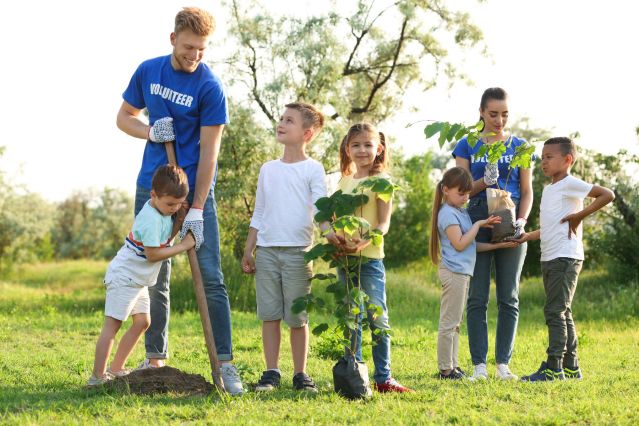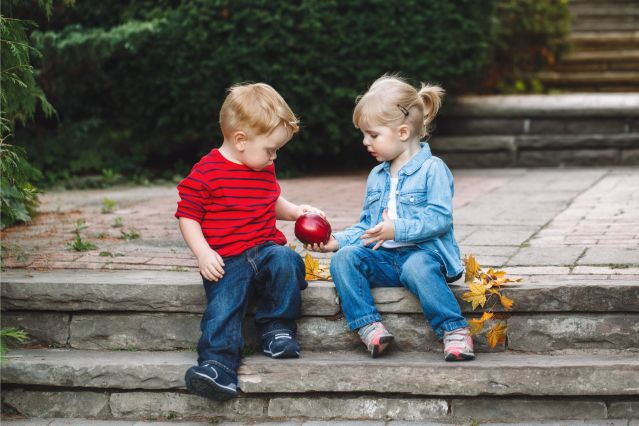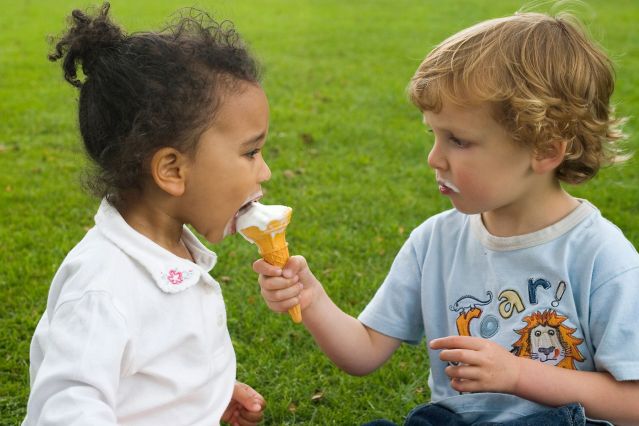Altruism
How to Foster the Value of Generosity in Your Children
The joy of giving.
Posted December 12, 2023 Reviewed by Abigail Fagan
Key points
- Talking about feelings with children and teaching them empathy lays the groundwork for generosity.
- Modeling thoughtful and generous behavior gives your children examples to learn from.
- Reinforcing generous behavior in your children with verbal praise shows them how much you value it.
Besides nurturing your child's cognitive development so that they can be successful in school and beyond, many parents also want to cultivate softer qualities in their children. Generosity is an important one, as it strengthens the relationships and communities in which your children participate.
It might surprise you to learn that while older individuals tend to be more generous than younger ones, we can start to see expressions of generosity in very young children. One recent study found that children as young as 15 to 18 months of age were willing to share a toy with another child they did not know. Interestingly, people living in less industrialized countries tend to be more generous than those in more industrialized countries, and, on average, women tend to be more generous than men.
Being on the receiving end of acts of generosity naturally feels good, but research also suggests that the act of giving can have a positive effect on the giver as well. It appears that many humans are actually wired to feel good when they give, indicating a biological component to human generosity. While not everyone is as naturally inclined to get the same degree of positive emotion from their acts of kindness, there is evidence to suggest that the value of generosity can be learned. And since this quality strengthens both personal relationships and larger communities, it is never too early to nurture a child’s capacity to give.
So how can we cultivate and encourage generosity in children? Here are a few suggestions:
Teach empathy and talk about emotions
A good starting place is helping children understand and label the emotions of other people. Ask them which behaviors might signal certain feelings. Have them describe the body language that accompanies specific emotions. Point out the impact of your children's actions on others. The empathy you are cultivating in these conversations will lay the foundation from which your children’s own acts of generosity will spring.
Discuss with your children the positive impact on both the giver and the receiver. Ask them to imagine and identify the emotional rewards of receiving help or kindness and of helping others.

Model the behavior you're trying to encourage
Don't underestimate the power of modeling the behaviors you want to see in your children. Children learn by observing and copying the behavior of those around them. Those of us who work with children can tell countless stories about children who imitate their parents or relate what parents probably thought were confidential conversations from home. Be aware of the messages you are sending your children through your own actions.
You can demonstrate generosity through your own behavior, whether by helping others, sharing, or showing kindness. Volunteering in your community can show your children how giving your time is an act of generosity. When you model what you want to see in your children’s behavior, you can comment on both the impact your actions may have on those you help and the positive feelings that your helpfulness generated in you. It’s also important to highlight that it can be enough just to know you have done something thoughtful; you don't always need affirmation or accolades from the recipient to feel good. You are trying to avoid creating the expectation of reciprocity

Encourage sharing and inclusion during play
Inclusion during activities can take the form of sharing time with a favorite toy or a turn at a fun activity. Sharing can mean temporarily forgoing one's own enjoyment so that someone else can have a turn at a positive experience. It could mean inviting or allowing a less skilled or less mature child to join in a game, or a peer who may want to play by different rules, but who will, as a result, feel a sense of acceptance and validation. Help your children recognize and understand how inclusion promotes a feeling of belonging in others and how it can elicit feelings of joy for themselves through their positive connection with others.
Reward generosity in your children and in others
Acknowledge and praise your children when they demonstrate generosity. As with any other behavior, positive reinforcement helps emphasize the value of their actions – in this case, of giving – and it makes it more likely that they will repeat this kind of behavior in the future. Psychologists who study this phenomenon in children specifically suggest that reinforcement in the form of verbal praise rather than tangible rewards better encourages them to continue these behaviors. You can also selectively draw attention to generosity in others, whether in real life or fiction (for example, when watching TV shows, movies, or reading books together).
Remember that fostering generosity will be like teaching any other skill that you hope to see integrated into your children’s engagement with the world. You will need to model it, value it, and sometimes be patient with its development. If it is something they encounter over and over again, they will come to see it in more nuanced ways over time and it will become an essential part of who they are and how they behave.
References
Reut Avinun, Salomon Israel, Idan Shalev, Inga Gritsenko, Gary Bornstein, Richard P. Ebstein, Ariel Knafo. AVPR1A Variant Associated with Preschoolers' Lower Altruistic Behavior. PLoS ONE, 2011; 6 (9): e25274 DOI: 10.1371/journal.pone.0025274
Patricia Kanngiesser, Felix Warneken. Young Children Consider Merit when Sharing Resources with Others. PLoS ONE, 2012; 7 (8): e43979 DOI: 10.1371/journal.pone.0043979
University of Notre Dame. (2013, February 27). New studies link gene to selfish behavior in kids, find other children natural givers. ScienceDaily.



